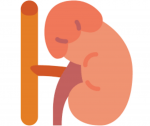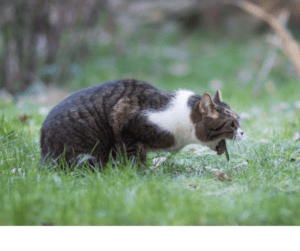Home » Pet Health » Pet Diabetes » Cats Diabetes
Cats Diabetes

Feline Diabetes, often known as Diabetes Mellitus, is a medical disorder in which a cat’s capacity to produce or respond to insulin is impaired.
Similar to humans, cats have a pancreas that produces insulin to help manage the sugar (glucose) in their systems. Without this particular function, sugar gathers up in the bloodstream and would go beyond normal levels. When a cat’s body is unable to balance out the sugar in its bloodstream, diabetes develops.
Cases of Feline Diabetes increased exponentially over time. To know more about the disease and its complications, continue reading below!
What is Glucose?
- Carbohydrates are obtained from the food consumed and eaten by cats.
- Carbohydrates are broken down into sugar and absorbed into the bloodstream after digestion.
- When blood sugar levels rise, the pancreas responds by releasing insulin.
- Insulin regulates blood sugar levels by allowing sugar to enter cells and be transformed into energy.

Types
There are two types of diabetes in cats; Type I and Type II Diabetes.
Type I, or Insulin-Dependent Diabetes, affects a diabetic cat’s ability to produce insulin, whereas Type II, or Insulin-Resistant Diabetes, inhibits and hinders the body from responding appropriately to insulin.
Type I Diabetes (Insulin-Dependent Diabetes)
When glucose levels in the blood rise (such as after a meal), the pancreas generates insulin. It occurs because the body is working to allow excess glucose into the cells for conversion while also engaged in regulating the amount of sugar in the bloodstream.
However, in the case of Type I Diabetes, the cat’s body does not create enough insulin to regulate blood sugar levels.
Type II Diabetes (Insulin-Resistant Diabetes
The most frequent type of diabetes in cats is Type II Diabetes. It is primarily linked to obesity and the overconsumption of high-carbohydrate, high-fat foods, which results in a prominent rise in blood glucose levels.
Rather than the pancreas’ inability to produce it in Type I Diabetes, Type II instead affects the body’s ability to respond to insulin. It is due to long-term exposure to significant amounts of sugar that creates insulin resistance by reducing the body’s sensitivity to insulin.
Type II diabetes, in most cases, can usually be reversed with exercise, weight loss, and a balanced diet.
Causes
Feline Diabetes has no known cause, although several variables can predispose cats to the disease. Obesity and overeating are the two leading causes of diabetes in cats since the majority of infected felines have Type II or Insulin-Resistant Diabetes.
Fortunately, most cats with Type II can recover completely with proper glucose management and a healthy lifestyle.
Chronic pancreatitis and hormonal abnormalities, including Cushing’s disease and hyperthyroidism, are other risk factors to look out for. Corticosteroids (such as prednisolone) and other medications are also linked to diabetes. Male cats are also more susceptible to this illness than female cats.

Type I diabetes, on the contrary, can be caused by injury or destruction of the pancreas’ insulin-producing beta cells. Chronic pancreatitis (pancreatic inflammation) and autoimmune disorders, which weaken the immune system’s capacity to identify healthy tissues from harmful germs and cause the body to attack itself, are common causes of this form of diabetes.
Risk Factors
Although any cat can acquire diabetes, certain cats are at a higher risk. A cat’s age, weight, breed, gender, and medications are all thought to play a factor in its susceptibility to diabetes.
Age

Feline Diabetes is more common in middle-aged and senior cats, particularly those that are 6 to 13 years old, and extremely rare in young cats.
Gender

Neutered male cats are said to be more vulnerable to acquiring Feline Diabetes than both fixed and unfixed female cats.
Breeder

Although any cat breed can develop the condition, Siamese and Burmese cats are by far the most susceptible to it.
Steroid Medications

Steroid medications (prednisone, dexamethasone, methylprednisolone, etc.) are prescribed to treat inflammatory conditions, such as arthritis, asthma, and anaphylactic shock. However, they are often only used when necessary and on a short-term basis. Dogs that take steroid medications longer than needed is at risk of developing what is known as steroid-induced diabetes, which is a type of diabetes that results from steroids causing the body to become resistant to insulin.
Obesity

Overeating and physical inactivity significantly increase a cat’s chances of developing Feline Diabetes, especially type II or insulin-resistant diabetes.
Cushing’s Syndrome

Cushing’s Syndrome is a medical condition that infects the adrenal glands. It leads to the overproduction of steroid hormone cortisol, and could also potentially trigger the development of Type II Diabetes by lowering the body’s insulin sensitivity.
Signs and Symptoms
Feline Diabetes symptoms differ from one cat to the next. Depending on how far the disease has gone or progressed, it may also present itself in different ways. Frequent urination and excessive thirst are among the most typical symptoms.
High blood sugar levels can overwhelm the kidney’s ability to filter glucose, causing sugar to “leak” out of the bloodstream and into the urine. This elevated urine glucose content can attract too much water into the urine, leading to increased urine volume, a higher risk of dehydration, more severe urinary water loss, and an increase in thirst to compensate.
Weight loss despite having a ravenous appetite is also a sign of diabetes. More severe complications include walking difficulties and loss of muscular coordination.
Cats with untreated diabetes may suffer nerve loss in their hind limbs, ending with them having a “plantigrade” stance of the hind limbs (standing or walking with their hocks on or close to the ground). Fortunately, this is not painful and can be resolved through proper medical treatment.
Early Signs
In addition to excessive thirst and frequent urination (inability to control urination), other early indications of Feline Diabetes are weight loss, urine incontinence, and increased hunger.
As diabetic cats cannot absorb glucose (the body’s primary energy source), stored fats and proteins are instead broken down and used as fuel. It results in severe hunger and dramatic weight loss.
Moreover, the kidneys attempt to move part of the sugar out through urine to restore glucose levels in the body. Unfortunately, as large amounts of glucose are released from the body, it draws in large amounts of water, leading diabetic cats to urinate more frequently than normal. They also struggle to maintain typical litter box habits and practices.

If your diabetic cat is experiencing problems, it is ideal that you supply them with a litter box that is easy to get to — particularly one with a low, wide opening. Choose one with high sides if your cat has a habit of spraying or kicking out litter.
Advanced Signs
Difficulty in walking is a possibility for cats with severe Feline Diabetes. They also may experience leg weakness, exhaustion, balance issues, vomiting, lack of appetite, and depression.
Loss of interest in normal activities they used to enjoy such as playing, climbing, running, and jumping is also something to be expected. Cats with these symptoms almost always require immediate veterinary assistance. They must be sent to an animal clinic immediately.
For instance, vomiting is usually an indication of either hypoglycemia (low blood sugar) or hyperglycemia (high blood sugar). Both conditions are exceedingly dangerous and can result in brain damage, seizures, coma, and even death if not addressed.

Diagnosis
A blood test that indicates the glucose concentration in a cat’s bloodstream is usually utilized to determine if it has Feline Diabetes. Unfortunately, the stress of being taken to the animal clinic can produce a momentary surge or spike in its blood sugar levels, leading to a misdiagnosis.
To prevent this, Veterinarians exercise other tests to diagnose feline diabetes. Aside from the usual blood test, they also perform the following steps:
Ask for Clinical Signs

When a cat is suspected of having Feline Diabetes, doctors would typically ask the pet parents about any symptoms or behavioral changes they have noticed, such as severe thirst, frequent urination, or weight loss.
Although these symptoms can be related to a variety of conditions, being aware of them can help veterinarians narrow down the list of possible causes.
Fructosamine Blood Test

Stress can cause increased blood glucose levels in cats, which makes it hard to take accurate measurements. Instead, veterinarians examine the concentration of fructosamine (a glucose-attached protein) in the bloodstream. Fructosamine, unlike glucose, is unaffected by stress, allowing for more precise monitoring of blood sugar levels.
Urinalysis

A urinalysis, often known as a urine test, allows veterinarians to analyze the contents, concentration, and appearance of a cat’s urine sample. The presence of glucose in a feline’s urine indicates that it has Feline Diabetes. If white blood cells are present, an infection may be present as well.
Top 5 Frequently Asked Questions
Most diabetic cats can have long and healthy lives as long as they follow the proper diet and treatment plan.
Allowing diabetic cats to drink as much water as they require is vital. Their severe thirst is caused by the body’s attempt to balance blood glucose levels by excreting excess sugar through urine.
There are many over-the-counter treats that felines with diabetes can enjoy on occasion. However, it is better to see your veterinarian first as they are far more familiar with your cat’s specific needs.
Owners of diabetic cats should avoid dry cat kibbles or food since they are high in carbohydrates. Instead, they opt for canned cat foods.
Bring your diabetic cat to the veterinarian straight away if it is not eating. If this is not an option, stop them from taking insulin for at least 24 hours or until you can contact your veterinarian.
To determine when to continue their insulin therapy, the veterinarian will first need to assess your cat’s condition.
Blogs

How To Identify Normal Cat Poop From Worrisome Ones?
Your cat’s poop can tell you many things about its health. Its color, shape, consistency, size, content, and odor can

Hairballs in Cats: What Are They & What Are The Signs?
Hairballs are common in cats. This condition, known as trichobezoar, occurs when hair becomes stuck in the cat’s throat, digestive

Colitis in Cats: What You Should Know
Colitis is one of the many gastrointestinal disorders that affect cats. It is a condition in which the intestine becomes

